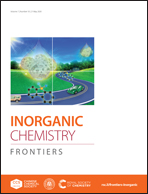Enhanced NO2 sensing performance of S-doped biomorphic SnO2 with increased active sites and charge transfer at room temperature†
Abstract
S-Doped biomorphic SnO2 was synthesized using biomass carbon as a template, where the biomorphic SnO2 adopts the morphology of the biomass. After the in situ growth of hexagonal or semi-hexagonal SnS2 on biomorphic SnO2, the structure of the bio-template was retained. This method is simple, eco-friendly, and cost-effective. The S-termination of SnS2 can effectively react with NO2 and thereby improve the gas sensing performance. As expected, the gas sensing performance significantly increased. The S-doped biomorphic SnO2 shows an excellent response to 100 ppm NO2 (∼57.38), a fast response time (∼1.60 s), and a low detection limit of as low as 10 ppb at room temperature (RT). The gas sensing performance exhibited strong dependence on the number of S–Sn–O chemical bonds. S–Sn–O chemical bonds can be regarded as bridges for electron transport. Chemical bonds reduced the interface state density and increased the carrier density, resulting in more chemisorbed oxygen and led to more NO2 reacting with the S-BCS-600 sensor at RT.



 Please wait while we load your content...
Please wait while we load your content...